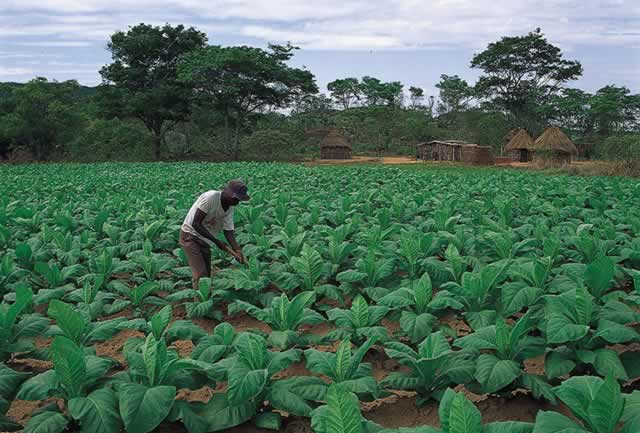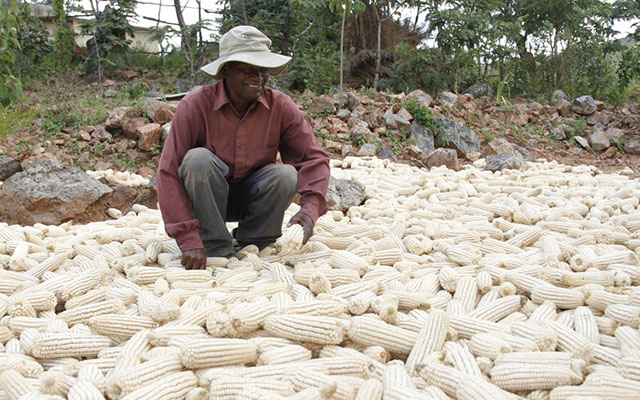Weed control in tobacco production

Chapman Koga and Rutendo Nyabadza —
Introduction
Weeds greatly retard crop growth by competing with the plants for nutrients, light and water. It is therefore, essential to remove weeds early and keep crops weed-free during their period of major growth.
Herbicides used in tobacco
Herbicides used in tobacco production are classified as either selective or non-selective in their activity. Selective herbicides are weed killers that attack specific plants, while leaving desirable plants unharmed or with minimal injury. These include herbicides such as Propaquizafop and Fluazifop-p-butyl which control grass weeds only. Non-selective herbicides, on the other hand, kill or damage all plants and are used in situations where complete plant control is required. For example Bentazone is commonly used as a non-selective herbicide on tobacco. These can be difficult to use in areas where weeds and desirable plants are growing side by side.
Herbicide classification by Time of Application Pre-emergent herbicides
Pre-emergent herbicides are applied before the germination of weeds and they prevent the germination of weed seeds by inhibiting key enzymes involved in important internal bio-synthesis processes. Pre-emergent herbicides should be applied on the ground within 3-7 days of transplanting followed by immediate irrigation (10-15 mm) to activate the chemicals.
In circumstances where irrigation is not available, the herbicide should be applied just before it rains, to achieve the same goal. Most commonly used pre-emergent herbicides include Clomazone, SMetolachlor, Trifluralin, Sulfentrazone and Pendimethalin.
1) Clomazone
Clomazone is a carotenoid and chlorophyll inhibitor that causes whitening in susceptible plants by inhibition of the biosynthesis of photosynthetic pigments. It controls several common annual grasses such as rapoko grass (Eluesine indica), shamva grass (Rotboellia cochinchinensis), stinkblaar (Datura stramonium L) and fat hen (Chenopodium album L).
The application rate depends on the soil type but as a guide 1,5 L of product is recommended per hectare in field application and one litre per hectare for seedbed weed control.
2) S-Metolachlor
S-Metolachlor targets enzymes which catalyse the biosynthesis of very long chain fatty acids thereby inhibiting root and shoot growth in susceptible species. It controls annual grasses (except Shamva grass) and has suppressive effects on yellow nutsedge (Cyperus esculentus).
The herbicide should either be sprayed on the soil after ridging but before holing out or onto the surface of the soil, over the seedlings, within 4-7 days of transplanting.
3) Sulfentrazone
Sulfentrazone is registered for the control of yellow nutsedge and annual broadleaf weeds. It functions by inhibiting protopophyrinogen oxidase, an important enzyme in the biosynthesis of chlorophyll. Sulfentrazone may cause seedling injury early in the season due to incorrect application method and delay in application. Sulfentrazone injury manifests as leaf discoloration and distortion, retarded growth and in extreme cases, crop death.
Spraying should be directed at the base of the plants so as to avoid contact with the heart of the tobacco plant. The rate of application is 425 – 475 ml or grammes per hectare, depending on product formulation (liquid or granular).
Post-emergent herbicides
Post-emergence herbicides attack weeds after they have emerged above ground. The “post” part of this type of herbicide refers to the fact that it is used on already existing weeds. Extreme caution should be exercised when applying post emergent herbicides to prevent spray drift onto the crop.
Examples include Fluazifop-p-butyl, a selective herbicide for the control of annual and perennial grasses recommended in the seedbed and field at application rates of 0,7 L and 3 L/ ha, respectively. Halosulfuron is registered for post control of sedge and broadleaf weeds applied at a rate of 50g/ ha.
Safe use of herbicides
Herbicide sprays must be directed towards the base of the crop to avoid contact with the leaves. Damage occurring on plants as a result of incorrect application of pesticides or herbicides is known as phytotoxicity.
To prevent such undesirable effects, shields can be used during application, to prevent drift onto the crop. Various herbicides cause different types of damage on tobacco.
Studies carried out at Kutsaga from 2010-12 revealed that herbicide combinations are important for effective weed control as they broaden the spectrum of weeds control.
For more information on herbicides, contact Kutsaga Research Station’s Crop Productivity Services Division on telephone # (04) 575289-94 or toll free, 0800 4511 or Email: [email protected] or visit Kutsaga Research Station, Airport Ring Road, Harare.





Comments